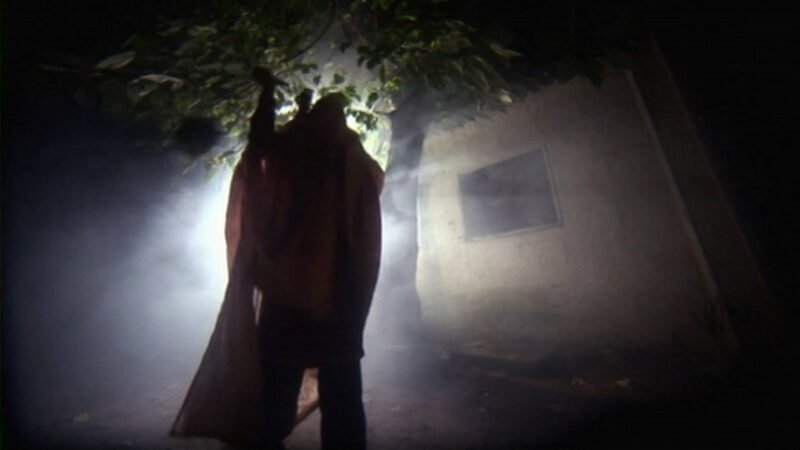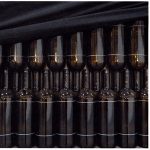
Probably my favorite of the recent Marvel to film movie productions. It helps that it wasn’t an idiotic superhero movie. Fortunately the focus is mostly on the characters and dialogue. However, like most modern CGI fests, the movie loses me during the big set pieces where I can’t tell what the heck is going on half the time. That said, a surprising amount of the action at least seems like it was done on a set with real people.

Although the subject matter is interesting, I didn’t get much out of the documentary that I didn’t already know from the trailer. The film follows the doomed pre-production of a 70’s version of Dune. It consists mainly of anecdotes about how each of the creative people behind the production was recruited by the director and inspired by his crazy vision. The film’s thesis is that this would have been one of the most remarkable films of all time, but it just felt like it would have been a typical 70’s sci-fi preach-fest with trippy design.

Mondo Macabro has been pretty consistent in their DVD releases. Lots of trashy and weird genre films from outside of Europe and America. While technically not a Mondo Macabro DVD release, Hell’s Ground was co-produced by them. It has a lot of the trademarks of one of their films: gore, low-budget production and groovy world music.
This is billed as Pakistan’s first zombie movie. Outside of one scene, it’s not really a zombie film but rather a somewhat standard slasher film. The unique Pakistan setting gives it a bit of flair, but all the usual cliches are there: dumb teens doing dumb things leading to a series of brutal murders. The real reason to watch this is the burqa-clad killer and his/her deadly morning star.
This film is definitely hindered by its low budget and I would love to see more films from the director with a little more production value. As it is, it’s enjoyable but not quite the roller coaster ride it could have been.

I know Lileks mostly as a humorous conservative commentator and a connoisseur of cheesy 50’s pop culture. I wasn’t sure what to expect with this one. Fortunately, the book leans more on the humor side of his writing than the politics. Politics come mostly in the form of the main antagonists being a group of PETA-like activists, but, for the most part, this is the story of a small town news reporter trying to regain his bearings after losing his girlfriend and his job. The first half of the book is chock full of one-liners and witty prose, but things get a little less jokey as the plot begins to unfold. I would have preferred a lighter tone throughout but the novel still managed to keep me engaged up to the end.

It took a while warm up to this record. Not nearly as aggressive sounding as the most of post-2000’s Wire, Red Barked Tree’s songs are much more well-thought out and structured. “Adapt” has a great dreamy quality, “Clay” feels like a lost track from Chairs Missing and “Bad Worn Thing” is probably my favorite song on this disc. Excellent.

While it starts out on a high note with “One of Us,” Object 47 doesn’t quite live up to the promise of Read & Burn 03. The songs are pretty conventional and lack that touch of “art rock” which made Wire so unique. But still, this is, by just about any measure, more exciting than most of the rock that is churned out these days.

This mediocre Eurospy movie is based entirely around the stunt casting of Sean Connery’s younger brother Neil in the title role. It has some style and a fun title song but the film is mostly just plods along from one silly plot point (can-can girls overtaking a military caravan!) to another (deadly, unstoppable hypnotism). The few highlights in the film include a raid with the heroes dressed in overalls and a bazooka and knife wielding nun.

Besides maybe Danger Diabolik, I haven’t seen many “Eurospy” movies—cheap, Bond knock-offs produced in Europe in the sixties. Surprising, this movie was rather good. It’s funny, exciting and looks great. This is not just a spoof of Bond, but takes itself rather seriously despite the lighthearted tone. How can you complain about a movie in which the main baddie is a cigar-based assassination happy Elke Sommer.
I’ve been having some technincal issues with this site lately. Strange links to content within the site have been appearing at random. I would insert a hyperlink to an archived post and then, days later, I would come back to see that the URL has been rewritten with a random sub-domain prefix. My domain would appear as www.wqw.robertgomez.org or similar.
I am not entirely sure what was going on but I think bots and the Drupal Pathologic module are to blame. Pathologic is a great module that will convert any internal site link into a standardized absolute URL. In my code I would create a link with an href of “node/1098” and Pathologic would convert that href to “http://www.robertgomez.org/blog/2014/03/17/drupal-my-list-essential-modules”. However, I suspect that when various bots crawled my site they used weird sub-domain prefixes in hopes of doing… I don’t know what?! Occasionally, one of these bots must have triggered a cron job, and my links were rewritten with the phony sub-domain. Seems feasible, right? If there is a real reason why this was happening, let me know in the comments.
The bad links could be fixed by opening a node and re-saving them. I used the Resave Nodes module to bulk save everything again. However, by the next morning the bad links had returned. The phony sub-domains were still being crawled. The next step was to use a rewrite rule in my .htaccess file that would force all subdomain traffic to a non “www” prefixed URL of the site. I then re-resaved everything, an so far thing are back to normal. Again, if you know what’s going on, shoot me a comment.

The final film in of The Hobbit trilogy is an improvement over the second movie. While it is still a bit heavy-handed with the CGI, there are fewer eye-rolling, physics-defying action sequences. It may have also helped that I watched this one in 3-D. The 3-D really gives the digital characters an added bit of weight and presence when sharing the screen with flesh-and-prosthetic actors. The first third of the movie is really just tying up plot lines from Smaug (the whole Gandalf vs. the wraiths thing could have been cut out completely IMHO) and the rest is the titular battle without much deep plotting. However, the spectacle of it all is worth it and they really ratchet up the stakes in the climax. Again, it pales in comparison with The Lord of the Rings but holds its own for the most part.





